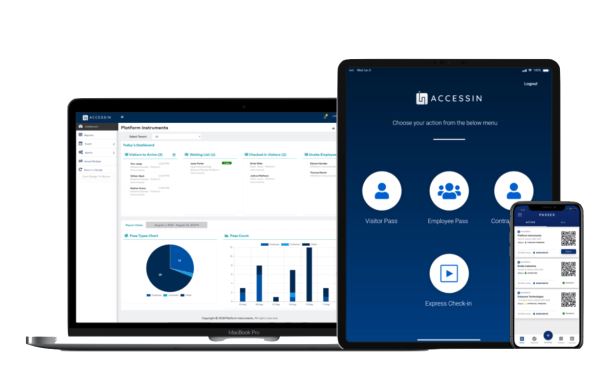As Australian organisations prepare for their staff to cautiously return to the workplace in 2021, smart buildings will play a key role in helping them get back to business as usual in the “new normal.”
Australia is faring better than most countries when it comes to tackling the COVID-19 crisis.
The staggered easing of restrictions across the country is allowing businesses to plan for a gradual return to work next year, but only with robust social distancing and workplace contact tracing regimes in place.
Tackling the challenges of COVID-19 will see the advantages of smart buildings come to the fore in 2021 although, even before the pandemic, organisations were already embracing their many benefits.
The global smart building market is expected to grow from $8.49 billion in 2016 to reach $57.81 billion by 2023, with a compound annual growth rate of 31.5%.
The increasing adoption of energy saving technologies has fuelled early market growth, offering more cost-effective management of HVAC services.
AccessIn is an Australian Integrated Asset Management Technology company that was recently launched to help businesses manage multiple static and moving assets.
AccessIn offers digital transformation in no-touch access management, asset tracking and monitoring as well as HVAC monitoring, incident/job management and auditing, maintenance reporting and ticketing, and custom integrations.
It is powered by Zetaris, a cloud-based technology that brings many data sources into one collective intelligence.
The technology allows both localised and cloud-based HVAC systems to integrate effectively in the one place without the need to rebuild historic technology systems.
Energy management delivers a clear return on investment for smart buildings while also empowering organisations to meet their green targets in alignment with their social responsibility programs.
Enhanced safety and security programs have also driven the take-up of smart building platforms, with the impact of the coronavirus pandemic set to further accelerate adoption.
Hands-off approach to smart building access
Touch-free building access will be a cornerstone of the new COVID-safe workplace, as organisations look to platforms like AccessIn to reduce physical contact and face-to face-interactions.
This begins at the front door, with automated and secure entry based on user profiles – opening smart locks as well as activating doors and turnstiles automatically, while incorporating infrared heat detection and temperature checks.
Meanwhile, traditional visitor access technologies such as check-in kiosks and physical guest passes will be replaced with touchless solutions that allow staff to securely authorise guests and permit building access without leaving their desk.
These solutions are driven by smartphone apps which take advantage of QR codes, Bluetooth sensors, facial recognition and geofencing, while extending to end-to-end solutions which incorporate car park access.
With most commercial buildings, there is no way of monitoring building occupancy and hibernating spaces accordingly. Likewise, there is no way of monitoring social distancing or trace COVID cases.
Once people are onsite, smart building technologies will allow organisations to meet their COVID-safe social distancing obligations while also demonstrating compliance. This includes enforcing maximum capacity levels, identifying congregation hotspots, issuing distancing alerts, consolidating communication systems, supporting contact tracing and allowing staff to book hotdesks, lockers and meeting rooms.
The COVID-safe practices underpinned by smart building platforms can even extend to the management of cleaning services with minimal touch points.
One of AccessIn's strengths is the ability to tap into and analyse the building's data, a key challenge facing many smart building managers. AccessIn enables the view of all systems in one interface, reducing touch points and increasing building efficiency, to ensure that the many points of data are not lost and overseen.
Look to the future
Beyond tackling COVID-19, smart buildings are also a wise long-term investment when it comes to boosting productivity and efficiency across an organisation.
AccessIn's smart building technologies which underpin social distancing can also allow organisations to make the most of their buildings, such as changing the purpose of spaces to meet different needs at different times of day.
Along with managing and protecting staff, smart building platforms allow organisations to distribute and track assets across a portfolio of sites, as well as manage the life of a building asset to retain commercial value.
This includes reporting and digitally auditing faults and maintenance issues more quickly, with predictive reporting for allocating tasks and communicating progress more efficiently. It is also possible to link accounting and time charges with tasks regardless of existing software.
The new year and beyond opens up a wealth of possibilities for future-proofing buildings, using cutting edge technology to deliver ongoing value.


